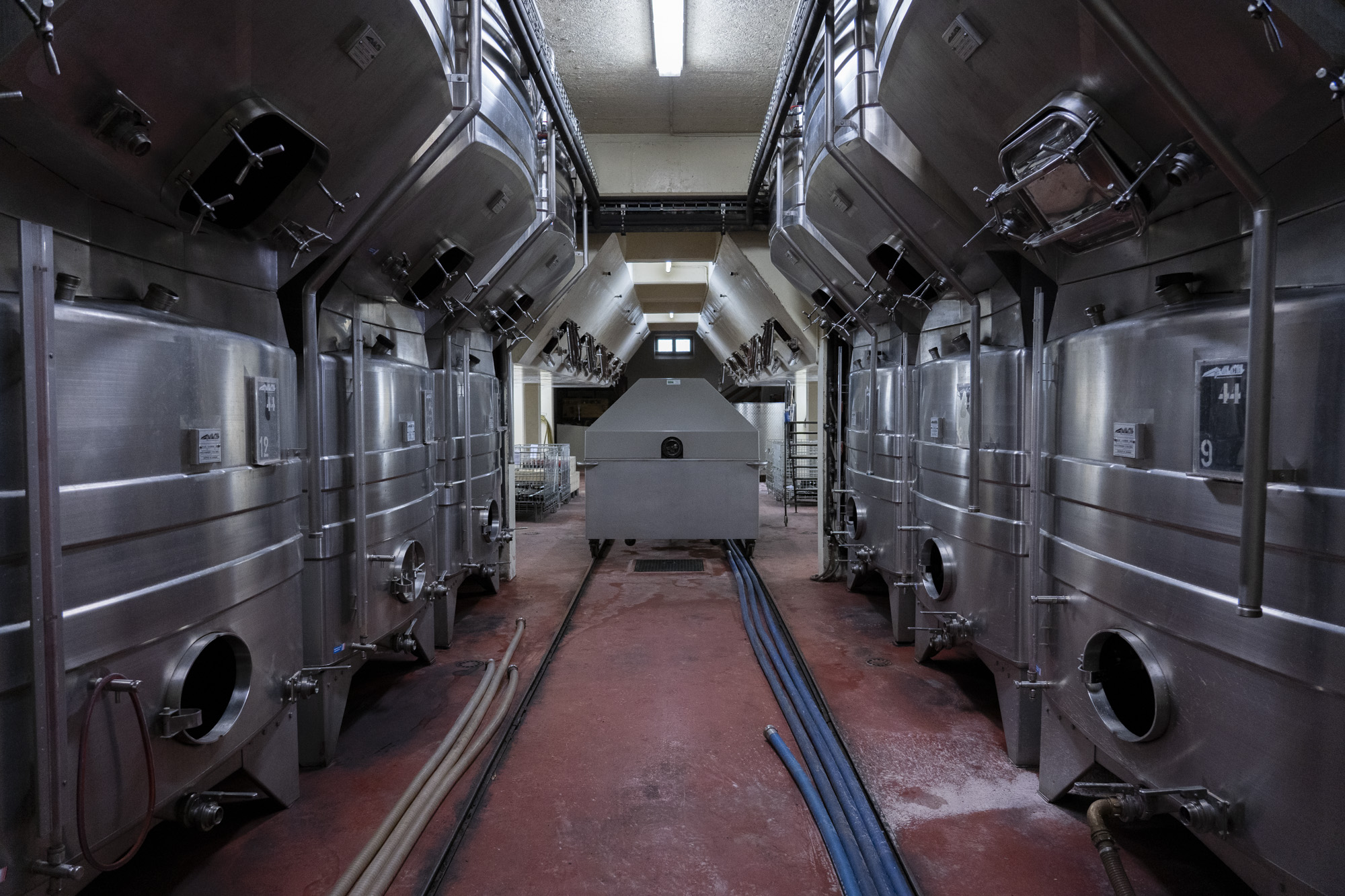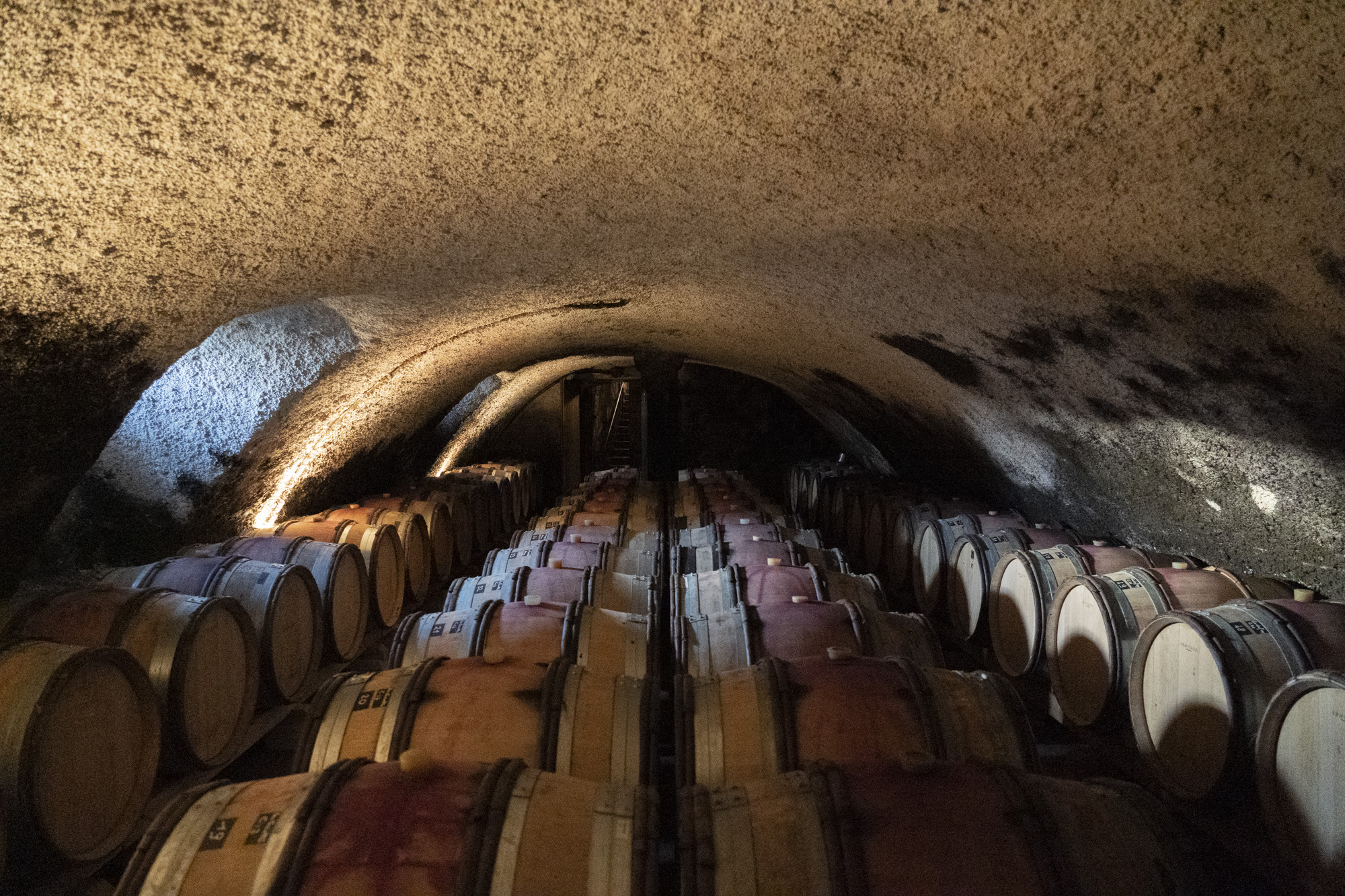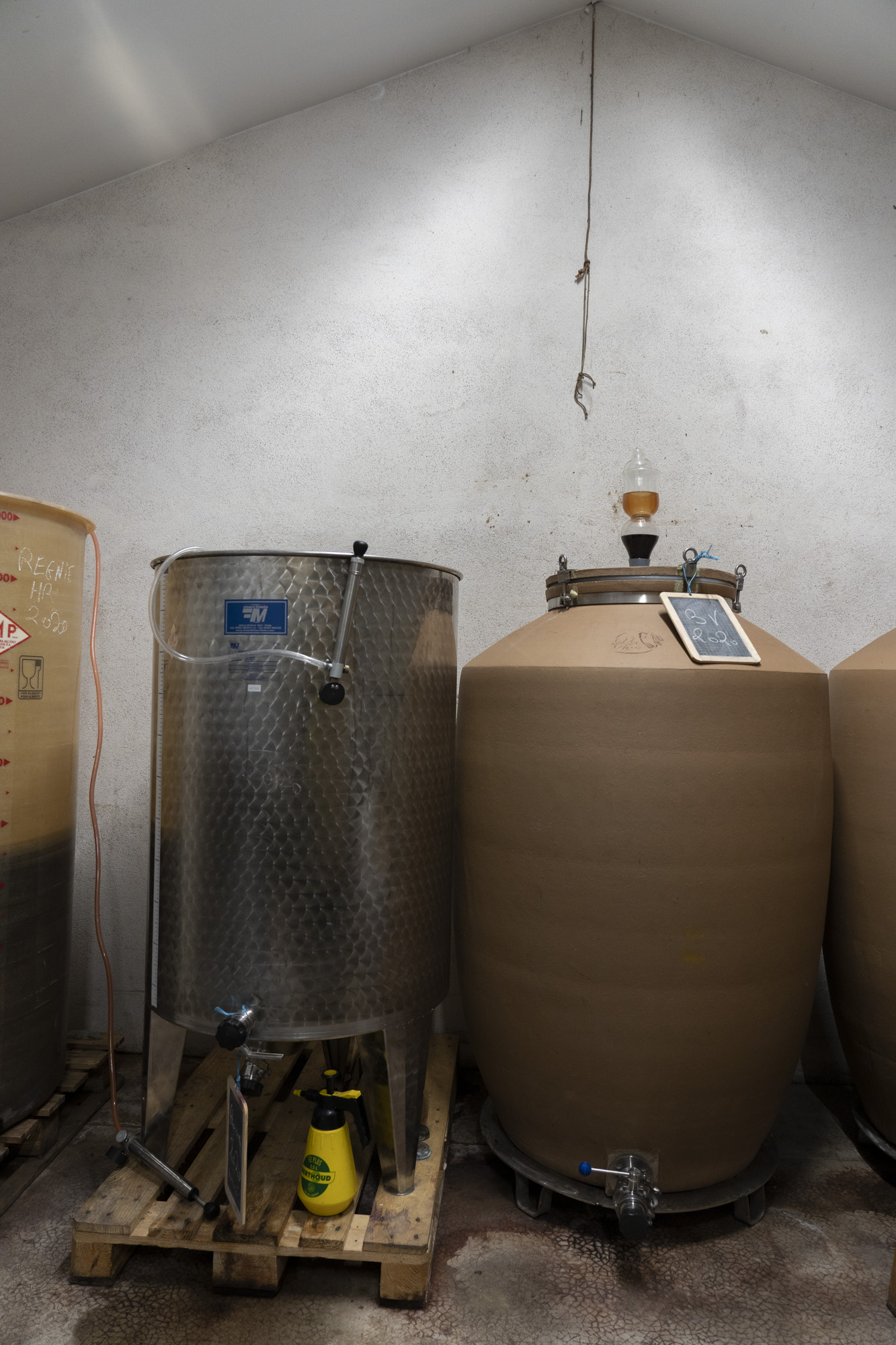Many investors from Bordeaux and Burgundy, but also coming from other industries or even amateurs interested in wine, have elected to invest sometimes considerable sums in the Beaujolais region. Over recent years this region has managed to regain the confidence of the wine trade as well as amateurs. But this renewed level of interest is not the sole explanation of such massive and diversified investments. Beaujolais has something extra that attracts: its unique grape variety, gamay, specific geology as well as a good dose of creativity in terms of wine-making all of which, combined, provide Beaujolais wines with unusual flavour profiles. In a world that is constantly seeking individuality, here we may have an valid explication for renewed interest in this region.
Gamay is the virtually native variety here and, if one decides to contain its natural vigour, it takes on accents from its locality. Hard or altered granite (alterite), fragmented granite (gore), bluestone and old alluvial soils with local variations provide a choice of sub-soils for wines that vary from the crisply fruity to the more structured and tannic. But such multiple combinations between site and grape, whilst characteristic of Beaujolais, are insufficient to fully explain the remarkable diversity of the wines of Beaujolais. For that one must go further down the road and into the cellars and wineries. Wine-making and maturing, with their multiple combinations, provide an unusually complex set of options for the Beaujolais producer. If most vinifications are now conducted in concrete tanks, there are four main approaches with flexible boundaries that give the winemaker numerous options.
The controversial method
In terms of volume of wine produced, the most widely used and controversial technique is thermo-vinification. This consists of heating the crop to around 70°C for 30 to 40 minutes. It is then crushed and macerated in liquid form, with added enzymes and yeasts which had previously been destroyed by the high temperatures. This technique helps in the extraction of polyphenols, colour and fruit aromas even for large crop volumes. It results in easy-going, quite standardized wines that have not exactly helped the image of Beaujolais. Yet, when used carefully, it comes in handy to save a crop that has been affected by botrytis by destroying the laccase component of botrytis whilst limiting oxidation and flavours of earth and mushrooms. The decision to use it will therefore be more a matter of good judgment and circumstance than of principle.

The imported classical method
De-stemming the berries before vinification, whilst widely used in other regions, has only recent gained favour in Beaujolais. After de-stemming and light crushing, the must is macerated in open tanks for a variable length of time according to the level of extraction required. Very often this is combined with cap-punching, pumping-over or bleeding the vat. Fermentation is simultaneous. After running off the wine and pressing the solids, the run-off wine is blended with proportions of the press wine according to the desired result and a maturing phase begins. This approach avoids any grassy or off-flavours that can be induced by the presence of stems or damaged berries.
And two well-known but little-understood approaches
Two other vinifiation techniques are widely used in Beaujolais. Both rely on harvesting whole bunches. Semi-carbonic maceration is the name given to the first approach. This is a traditional technique in Beaujolais and is quite complex. Bunches are carefully hand-picked and put into tanks, having avoided as much as possible any alteration along the line. These tanks, usually of concrete, are filled to about two-thirds of capacity. Three differents conditions are formed in the tanks, each with its specific dynamic. At the bottom one obtains juice that is liberated by the weight of the bunches above, within which yeast-fuelled fermentation starts. Carbon dioxide gas is released in the process and, being heavier than air, saturates the tank and can thus be contained. In the upper part of the tank, the whole berries are thus saturated with CO2 in an air-free environment. Without any contact with air, another form of fermentation starts inside these berries through the action of enzymes. In the middle section of the tank, there is a mixture of these two procedures that produces combined liquid and osmotic fermentations. According to the structure and flavour profile sought, the winemaker can adapt the proportion of juice in the tank as well as the length of maceration, the temperature and the number of operations of pumping-over, cap-punching or bleeding. Each operation requires extreme care in order to preserve the quality of the grapes and maintain the presence of CO2 in the tank. After this stage the wine is racked and the solids, which are essential in this process, are pressed before the different lots are blended to finish fermentation together and be matured.
Carbonic maceration is a technique that was promoted in Beaujolais by Jules Chauvet who initiated an approach that uses little or no added sulphites in order to enhance the precision of fruit aromas. He also worked on non-cultured yeasts and can thus be seen as a pioneer of the so-called « natural » wine-making movement. In the case of full carbonic maceration, healthy whole bunches are picked and carefully placed in tanks that are then hermetically sealed and saturated with carbonic gas. The principle here is to preserve whole berries from air in order to encourage fermentation within these berries. Under the weight of the bunches, juice is progressively liberated but its volume is controlled by regular bleeding of the tank and replenishing the carbonic gas. Alternatively, one can revert to the previous method with three different layers emerging in the tank. After a maceration phase of variable duration, the partially fermented wine is racked and the solids pressed prior to blending, finishing the fermentation (this time with yeasts) and maturing. There are numerous variations of these two techniques, including partial de-stemming. Therefore one should not look down on carbonic maceration. Many fine wines, some of them from the best estates in Beaujolais, use these techniques that can surprise and delight the wine lover.

And what else?
To finish this exploration, a few words on the maturing process. In Beaujolais one often finds both rectangular concrete vats and wooden ones. Recent years have seen the emergence of a more varied set of materials for the containers. New or used oak barrels are increasingly used in order to induce micro-oxygenation of wines, as well as for the aromatic properties of oak. In addition, we are now seeing egg-shaped or truncated concrete tanks, earthernware or stoneware jars that may provide some degress of porosity as well as a different shape. Finally there are also glass containers that are both neutral and hermetic. The winemaker thus has many options through this diversity in order to vary the expression of his wines that all begin with a single grape variety. Each will have his or her preference and this also enables them to extend and diversify their range. In a given cellar one may well find, side by side, wines that have been made and matured using quite different techniques and sometimes these are even blended together. In a wine region that is going through changes, enthusiastic producers are using the specific characteristics of their vineyard sites and this range of techniques to forge individual styles that make up the rich patchwork of Beaujolais. The wine-lover can only stand to win in such a race!
Gilles Martin

Photo credits: Aurélien Aumond
